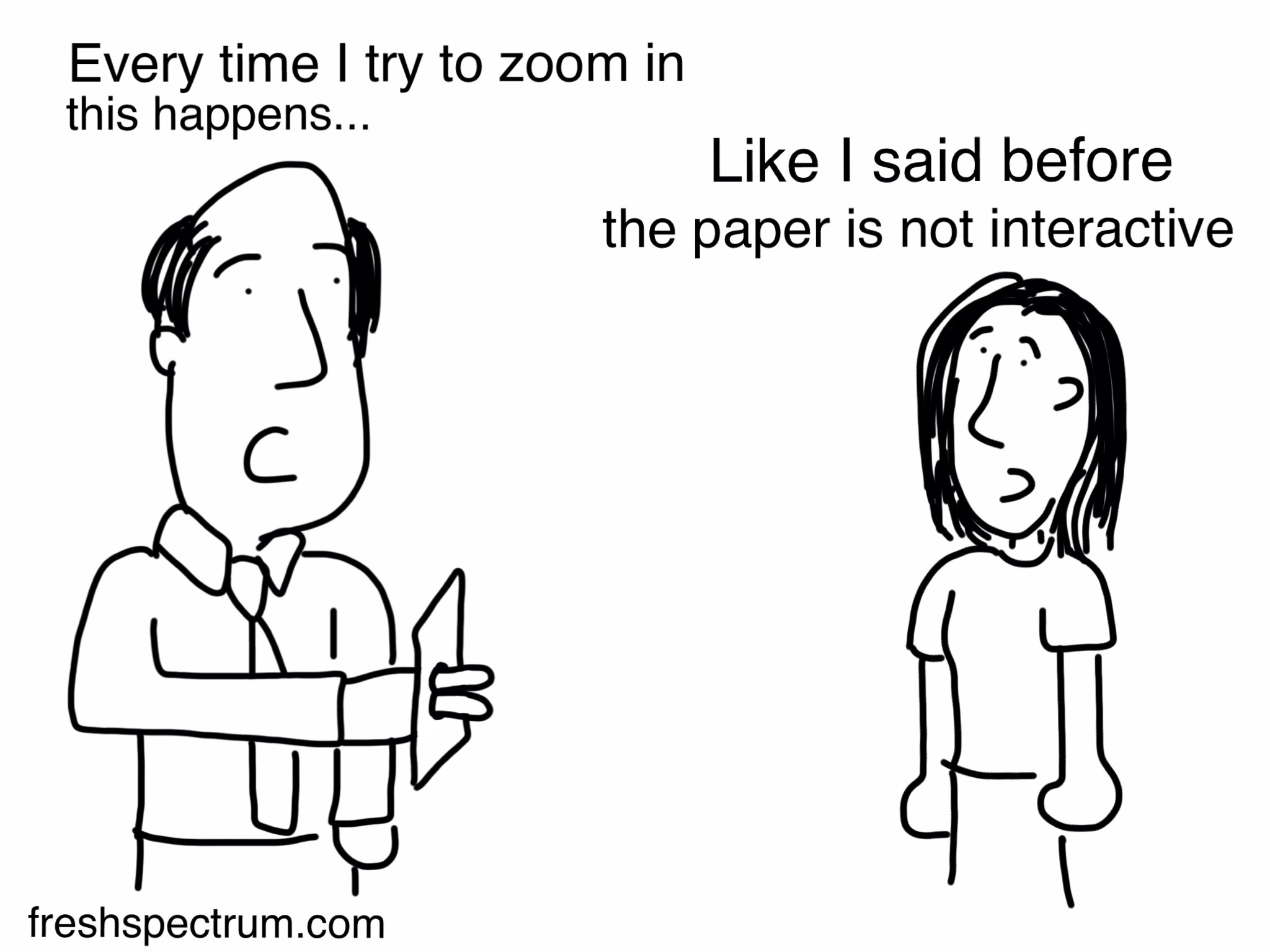There's no shortage of hype and confusion surrounding big data. Plenty of companies are starting to dip their toes in the pool despite the relative paucity of documented case studies – at least compared to ERP, CRM and BI applications.
Sometimes people ask me, "Can you give me one tip for getting started with big data?"
Sure. Get interactive.
As I researched The Visual Organization, it became obvious to me that an increasing number of organizations get it. They have realized that today’s ever-increasing data streams, volumes and velocity require new applications. Traditional BI tools, SQL statements and data warehouses still have value, but they were conceived in a world of structured, relational and transactional data. The new dataviz tools were not.
These new tools promote a different employee and organizational mindset – one based upon data discovery and exploration, not on conventional enterprise reporting. Interactive heat maps, tree maps and choropleths promote true data discovery to a far greater extent than static graphs and pie charts do. Consider the cartoon below:

Despite the implication above, don't get me wrong. I still enjoy paper. I read books the old-fashioned way. I like to give my eyes a rest. When I know precisely what I want (and don't want), I enjoy the relative solitude that paper provides. (As an author, publisher royalty reports are complicated enough without any technology distractions.)
But there's the rub: When you know what you're looking for, you can get away with old-school tools. By contrast, big data lends itself to discovery, to not knowing exactly what you are going to find. And, at least to me, that represents a significant percentage of the potential value that big data can provide. (I qualify that statement with "potential" because there's certainly no guarantee that you'll find anything earth-shattering.)
Simon says: Recognize the limits of paper and static reports
Consider this Simon's First Law of Data Visualization: The more interactive the tool, the more likely employees and organizations are to discover useful insights.
Feedback
What say you?
